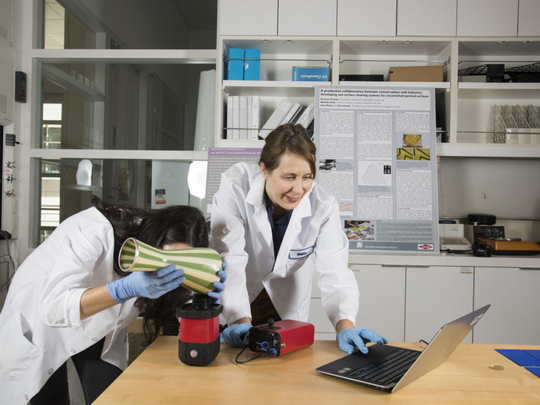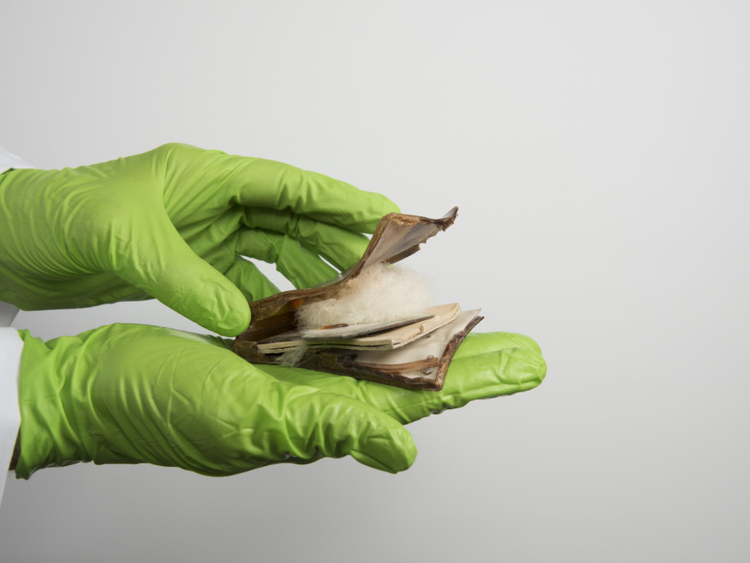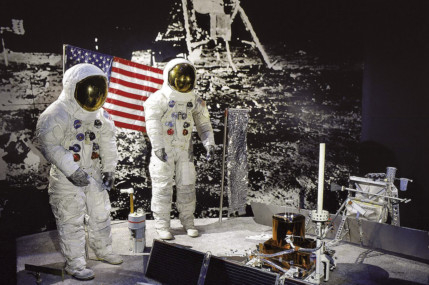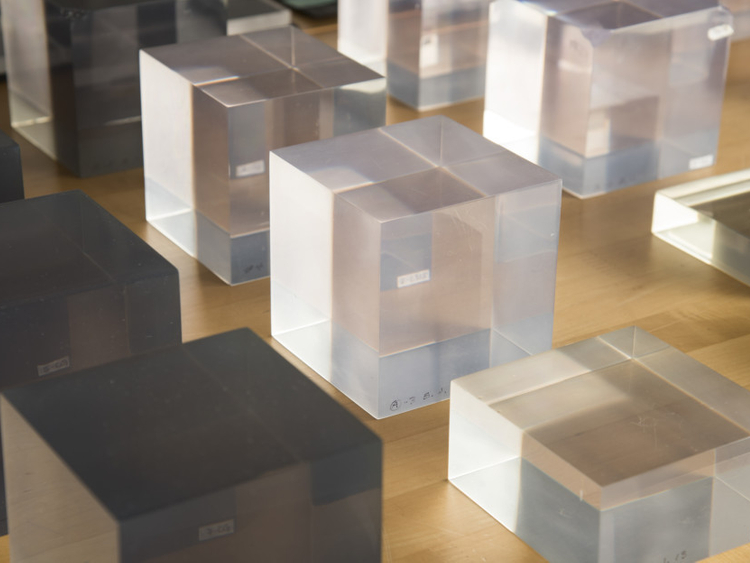
The custodians of Neil Armstrong’s spacesuit at the National Air and Space Museum saw it coming. A marvel of human engineering, the suit is made of 21 layers of various plastics: nylon, neoprene, Mylar, Dacron, Kapton and Teflon.
The rubbery neoprene layer would pose the biggest problem. The suit’s caretakers knew the neoprene, although invisible, buried deep between the other layers, would harden and become brittle with age, eventually making the suit stiff as a board. In January 2006, the Armstrong suit, a national treasure in America, was taken off display and stored to slow the degradation.
Of an estimated 8,300 million metric tonnes of plastic produced to date, roughly 60 per cent is floating in the oceans or stuffed in landfills. Most of us want that plastic to disappear. But in museums, where objects are meant to last forever, plastics are failing the test of time.
“It breaks your heart,” said Malcolm Collum, chief conservator at the museum. The Armstrong suit’s deterioration was arrested in time. But in other spacesuits that are pieces of astronautical history, the neoprene became so brittle that it shattered into little pieces inside the layers, their rattling a brutal reminder of material failure.
Art is not spared either, as Georgina Rayner, a conservation scientist at Harvard Art Museums, showed at the American Chemical Society’s national meeting in Boston last month.
Claes Oldenburg’s “False Food Selection,” a wooden box containing plastic models of foods like eggs and bacon, a banana and an oatmeal cookie, now appears to be rotting. The egg whites are yellowing, while the banana has completely deflated.
In museums, the problem is becoming more apparent, Rayner said in an interview, “Plastics are reaching the end of their lifetimes kind of now.”
Challenges for Conservators
Of all materials, plastics are proving to be one of the most challenging for conservators. “I find plastics very frustrating,” Collum said. Because of the material’s unpredictability and the huge variation in forms of deterioration, he said, “it’s just a completely different world.”
“We have a very short history, in comparison to other materials, in understanding how long those materials last,” said Hugh Shockey, lead conservator at the St Louis Art Museum.
Metal, stone, ceramic and paper have survived thousands of years, while plastics have existed for a little over 150 years. In that short time, however, they have risen to dominate the materials we use today. And plastics increasingly appear in art and artifacts nominated for preservation.
A walk through various Smithsonian Institution museums makes that clear. There’s the art, of course: acrylic paintings, a polyester parabolic lens with a mirrorlike surface, a fibreglass sculpture of a middle-aged woman poised to dig into a melting banana split.
There are the triumphs of human ingenuity: the first artificial heart, Ella Fitzgerald’s LPs, the Apple I computer, a D-Tag device that helped researchers track and save endangered right whales.
And there are the mundane objects, the documentation of human life: an electric can opener, a pink Princess rotary telephone, Tupperware, a six-by-eight array of coffee cup lids, all with different designs.
“You have these objects in any museum collection, especially historic objects — they take you back to a time. But holding that moment in time in a material sense is tough,” said Odile Madden, a plastics conservation scientist at the Getty Conservation Institute in Los Angeles.
Madden leads a small group of scientists at the institute’s Modern and Contemporary Art Research Initiative, ModCon for short, who are working to help plastic live forever.
Determining the Source
The first step for these conservators and others is to determine simply what the plastic is.
“We use this word as a monolith, ‘plastics,’ when in fact it’s many hundreds and thousands of different things,” said Gregory Bailey, a conservator at the Smithsonian American Art Museum.
“Plastic” simply refers to something mouldable. Often, plastics are mixtures of polymers — big, long-chained molecules — and small-molecule additives. The earliest plastics were made from modified natural polymers like cellulose, but most plastics today are based on synthetic polymers that last much longer.
The additives may be so-called plasticisers that improve flexibility or fillers that strengthen the matter. “There are pacifiers, pigments and sometimes even glitter,” Madden said. “You end up with an enormous number of possibilities for what a plastic composition could be.”
The views from the Getty institute, perched on a hill, stretch to the Pacific Ocean on a clear day. One afternoon, Anna Lagana, a conservator, rustled through a bin of plastic objects, some faded, others shattered.
The objects belonged to a reference collection donated to advance plastic conservation research at the institute. “This is all the drama,” she said.
She picked out a toothbrush split into two pieces at the middle. At its ends, the plastic handle was transparent, albeit yellowed. But near the breaks, the toothbrush is opaque, as if a cloud of white flowers had bloomed inside it.
Madden held the broken toothbrush under a microscope.
“The field started with very rudimentary physical tests, like a hot needle test” on a surface to see if the plastic melted, she said. “If it gave off some kind of smell, does it smell piney? Does it smell like burnt hair?”
Today, conservation scientists use advanced analytical techniques like microscopy or spectroscopy to identify materials.
Magnified, the white clouds in the toothbrush’s handle turned out to be an intricate system of cracks within cracks within cracks. Lagana and Madden immediately identified the plastic as cellulose nitrate, an early material widely used in photography and motion picture film.
The conservators had seen this type of damage many times before. “There is no other plastic that cracks in this way with this shape,” Lagana said.
Scientific analysis is usually accompanied by archival research. “We spend a lot of time studying the history of how these things are made,” Madden said. “If it’s a piece of Lego made before 1960, I’m expecting it will be cellulose acetate, not ABS.”
For objects with almost no information, a good technique to start with is spectroscopy, an analysis of how molecules interact with light.
Madden brought out a green-and-white striped vase and a small, red instrument. The instrument fires infrared light through materials, explained Michael Doutre, a ModCon scientist.
After absorbing infrared light, the bonds that connect different atoms within molecules will bend and stretch in distinctive ways, like signature dance moves. By examining the moves recorded on a graph, scientists can identify the type of bonds and try to infer what the molecules are.
Lagana holds the vase steady while Madden touches the tip of the spectrometer to it.
“For me, it’s polyethylene or it’s polypropylene,” said Lagana, a guess based on the feel and smell of the vase.
Doutre started the analysis on a computer, and a graph appeared on the screen. Lagana was right — the graph indicated nothing other than simple bonds between carbon and carbon atoms, and carbon and hydrogen atoms.
“In this case, the absence of things tells us it’s polyethylene,” Doutre said.
Madden pulled out what used to be a powder box, its cover now badly warped, cracked and covered in a layer of white powder.
“The plastic has lost some proportion of its mass,” she said, because its plasticiser had migrated to the surface and emerged as white powder. Without plasticiser, the box became brittle and shrank, and then finally cracked along its sides.
Shrinking and additive migration are two of the most common ways plastics degrade.
While in storage at the Smithsonian, curators found that a brown stain had appeared on the Armstrong suit’s left torso as plasticiser moved out of the air supply tubes, which were made of polyvinyl chloride.
That happens because the molecules within plastics are not arranged in the most efficient way, said Jane Lipson, a physical chemist at Dartmouth College.
They are like frozen disorganised liquids, containing a lot of empty, random gaps between molecules. Over time, the large polymer molecules will slowly reorganise and pack themselves more efficiently, which looks like shrinking to the naked eye.
Any small-molecule additives will work themselves out through the gaps until they reach the surface as a sticky liquid or a white powder. When plastics get warm, they degrade faster because the molecules have more energy to move around.
“They’re sort of finding their way to a place that’s more stable,” Lipson said.
Slowing Down the Process
Often, conservators just try to find the best conditions in which to maintain the artefacts. “Much of the conservation is how do we manage the storage or display environment to slow down the deterioration as much as possible,” said Bailey, of the Smithsonian American Art Museum.
That may involve filtering out ultraviolet rays to decrease random breaking of plastic’s molecular bonds, a tall order for the museum (it has lots of windows). Preserving a plastic artwork also may mean keeping the temperature low and humidity stable to reduce plasticiser migration, or providing an oxygen-free environment to prevent oxidation.
Collum and his team are building a special display case for the Armstrong suit in carefully chosen conditions: 63 degrees Fahrenheit, 30 per cent humidity, plus filters to remove contaminants. The conservators hope to have the display ready for next year’s 50th anniversary of the moon landing.
Even something as innocuous as cleaning an object for an exhibit can be a complex process. It seems easy enough to clear plasticiser from a surface, for instance, but cleaning prompts more plasticiser to emerge, effectively accelerating degradation.
“The plasticiser is actually trying to find equilibrium between the outside of the plastic and the inside of the plastic,” Shockey said. “But once you override the equilibrium, you can have a catastrophic event.”
Routine dusting can scratch a plastic’s soft surface, ruining a pristine, glossy finish. As an alternative, Shockey has pioneered a technique in which tiny microcrystals of dry ice or carbon dioxide “snow” are jetted over the surface to pick up dust and other contaminants.
Despite their notoriety as a major pollutant, plastics have important stories to tell. Even if we move away from plastics, Shockey said, “I think there’s still the need for persistence of memory in human culture.”
He recalled the story of tortoiseshell and its plastic doppelganger, cellulose acetate. “We nearly hunted a particular turtle to extinction,” Shockey said, “and then we were able to turn away from the natural material to an alternative.”
“There’s a reason why we use them instead of the more traditional materials,” said Jeannette Garcia, a polymer chemist at IBM. For the most part plastics are cheap and versatile, lightweight yet strong.
Plastic bottles help transport clean drinking water to remote areas, lightweight composites help save energy in automobiles and planes, single-use sterile syringes and blood bags help extend lives. Prosthetics help replace failing body parts.
“We can outlive our bodies, thanks in part to plastic,” Madden said. Not to mention sending people into space.
–New York Times News Service















